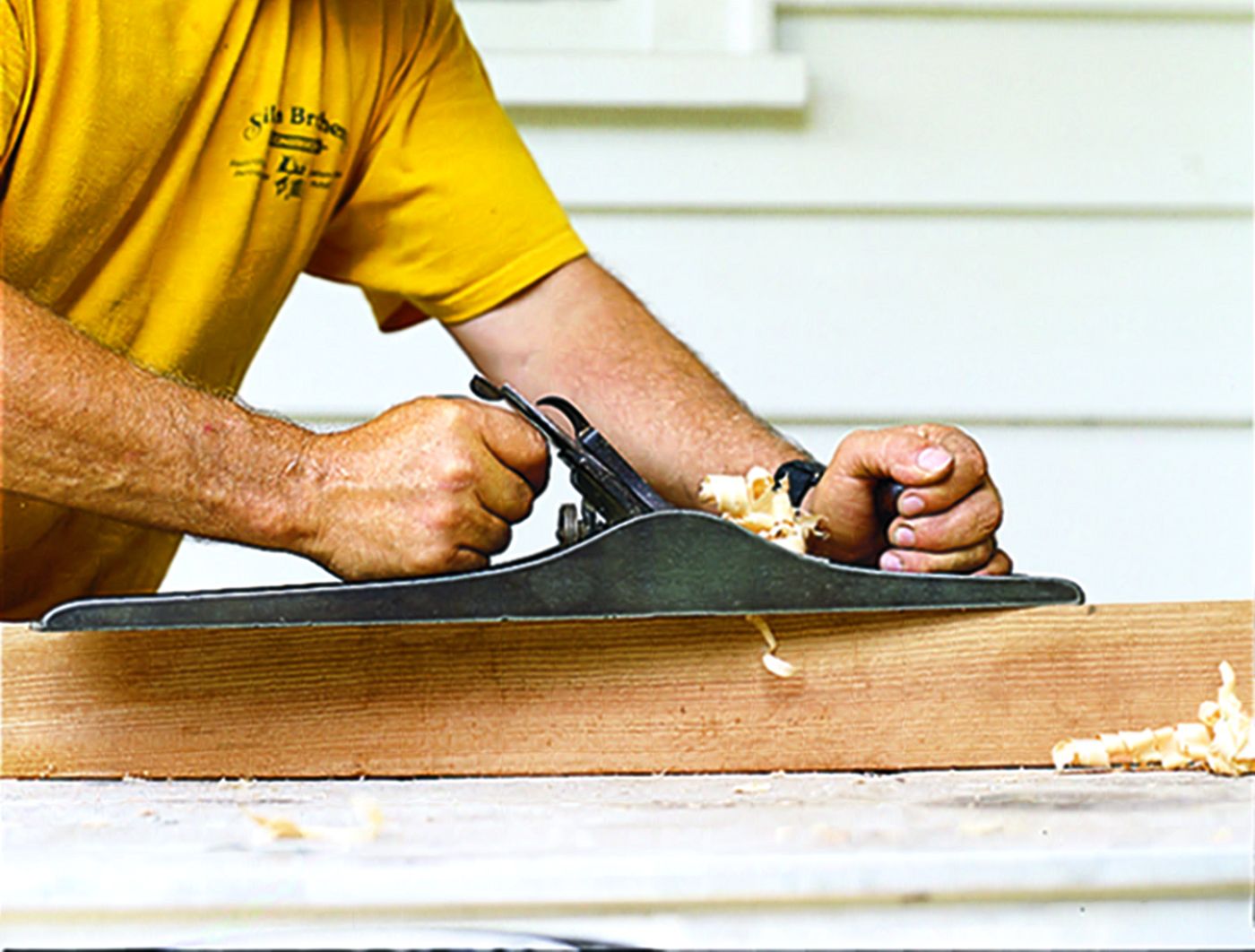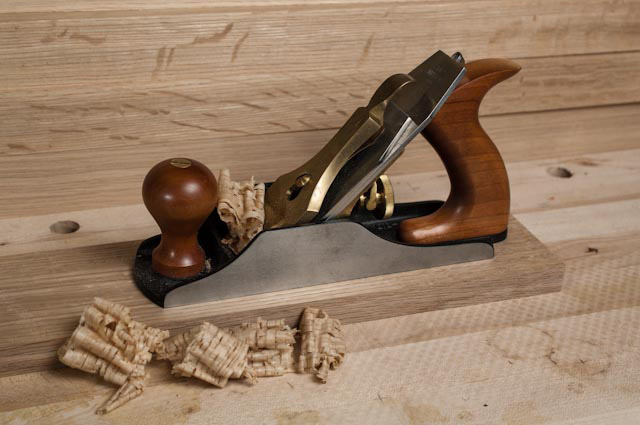Are you curious about whether you need a hand planer? Well, you’ve come to the right place! In this article, I’ll guide you through the ins and outs of hand planers and help you determine if they’re a must-have tool for your woodworking adventures.
Now, you might be wondering, “What exactly is a hand planer?” Simply put, it’s a handy tool that helps smooth and shape wood surfaces to perfection. Think of it as a magician’s wand for woodworking, allowing you to create beautifully polished finishes and straight edges.
But do you really need a hand planer? That’s the million-dollar question. Whether you’re an aspiring woodworker or a seasoned pro, a hand planer can be an invaluable addition to your toolkit. It allows you to tackle a range of projects, from leveling rough lumber to chamfering edges, giving you the power to turn your vision into reality.
So, if you’re ready to dive into the world of woodworking and achieve professional-level results, join me as we explore all the reasons why a hand planer might just be the missing piece in your woodworking puzzle. Let’s get planing!
Why a Hand Planer Might Be the Perfect Tool for You
If you enjoy woodworking or DIY projects, a hand planer can be a valuable addition to your toolbox. With its ability to smooth and shape wood, a hand planer offers precision and control. It allows you to quickly remove material and create smooth surfaces. Whether you’re leveling a door, chamfering edges, or fitting wood pieces together, a hand planer can make your projects easier and more professional-looking. Consider adding this versatile tool to your collection.

Do I Need a Hand Planer? Exploring the Benefits and Uses
When it comes to woodworking and carpentry projects, having the right tools is essential. One such tool that can greatly aid in achieving precise and smooth results is a hand planer. But do you really need a hand planer in your toolkit? In this article, we will delve into the benefits and uses of hand planers to help you determine if it’s a tool worth investing in.
1. What is a Hand Planer and How Does it Work?
A hand planer is a handheld woodworking tool used to shape and smooth wood surfaces. It consists of a sharp cutting blade, called the iron, that is held in place by a metal body. The blade is adjustable, allowing you to choose the desired depth of cut. To use a hand planer, you simply push it along the wood, allowing the blade to shave off thin layers and create a smooth finish.
The versatility of hand planers lies in their ability to be used on various types of wood and for different purposes. From leveling rough lumber to chamfering edges, a hand planer can help you achieve a polished and professional result.
Not only does a hand planer offer precision and control, but it also allows you to work efficiently by removing material quickly. This can be especially useful when you need to remove imperfections or adjust the thickness of a piece of wood.
2. Benefits of Using a Hand Planer
Now that you have an understanding of what a hand planer is and how it works, let’s explore some of the key benefits of adding this tool to your collection:
- Smoothing and Finishing: A hand planer is ideal for creating smooth and even surfaces on wood, allowing for a professional finish.
- Thickness Adjustment: With a hand planer, you have control over the thickness of the wood, making it easier to achieve the desired measurements and fit.
- Removing Imperfections: Whether it’s a small bump or a larger defect, a hand planer can easily remove imperfections, creating a flawless wood surface.
- Shaping and Chamfering: Hand planers are perfect for shaping and chamfering edges, giving your woodworking projects a refined look.
- Portability: Unlike larger planers, hand planers are compact and portable, allowing you to easily bring them to different job sites.
These are just a few of the many advantages of using a hand planer. Depending on your woodworking needs, you may find even more benefits that make it an essential tool in your workshop.
3. Do-It-Yourself Projects Made Easier with a Hand Planer
Now that you understand the benefits, let’s explore some common DIY projects where a hand planer can come in handy:
Making Furniture:
From smoothing out table legs to creating perfectly flat surfaces for tabletops, a hand planer can greatly assist in creating custom furniture pieces.
Building Cabinets:
When constructing cabinets, ensuring that all the pieces fit together seamlessly is crucial. A hand planer can help you achieve the right thickness and perfectly level surfaces for a seamless result.
Refinishing Wood Floors:
If you’re planning to refinish your wood floors, a hand planer can help remove old finishes, level uneven areas, and create a smooth surface for refinishing.
Choosing the Right Hand Planer for Your Needs
Now that you’re convinced of the benefits of a hand planer, it’s important to choose the right one for your specific needs. Here are some factors to consider:
Size and Weight
Hand planers come in various sizes and weights. Consider the type of projects you’ll be working on and choose a hand planer that is comfortable to hold and maneuver for extended periods.
Blade Adjustability
Look for a hand planer with a blade that is easily adjustable. This will allow you to control the depth of cut and achieve the desired results with precision.
Quality and Durability
Investing in a hand planer made from high-quality materials ensures longevity and optimal performance. Look for options with positive reviews and reputable brands.
Budget
Set a budget for your hand planer purchase and compare prices, features, and reviews to find the best tool that fits within your budget without compromising quality.
Conclusion
A hand planer can be a valuable addition to your woodworking toolkit. Its versatility, precision, and ability to achieve smooth finishes make it an indispensable tool for both amateurs and professionals. Consider the benefits, assess your woodworking needs, and choose a hand planer that meets your requirements. With the right tool in hand, you’ll be able to take your woodworking projects to the next level with confidence and ease.
Key Takeaways: Do I Need a Hand Planer?
- 1. A hand planer is a useful tool for woodworking projects.
- 2. It can help you smooth rough surfaces and shape wood.
- 3. If you enjoy DIY projects or woodworking, a hand planer can be a valuable addition to your tool collection.
- 4. Hand planers come in different sizes and styles, so choose one that suits your needs.
- 5. Learning how to safely and properly use a hand planer is important to achieve the best results.
Frequently Asked Questions
Are you wondering if you need a hand planer? Look no further! We’ve got answers to your questions about hand planers right here.
1. How can a hand planer benefit me in woodworking projects?
A hand planer is a versatile tool that can greatly enhance your woodworking projects. It allows you to smooth rough surfaces, chamfer edges, and even shape wood according to your desired specifications. Whether you’re working on intricate details or larger surfaces, a hand planer can help you achieve the desired precision and smoothness.
Additionally, a hand planer can save you time and effort compared to alternative methods. Instead of spending hours sanding and shaping wood by hand, a hand planer can efficiently remove excess material with ease. It’s an invaluable tool for any woodworking enthusiast or professional.
2. Can a hand planer be used for both hardwood and softwood?
Yes, a hand planer is versatile enough to work with both hardwood and softwood. The key is to choose the appropriate blade and adjust the planer’s depth settings accordingly. For hardwood, you may need a sharper blade and a lower depth setting to effectively remove material. Softwood, on the other hand, may require a slightly higher depth setting.
It’s worth noting that different types of wood may have varying densities, so it’s always a good idea to test your hand planer on a small, inconspicuous area before proceeding with your project. This will help you determine the optimal settings for achieving the desired results.
3. Do I need any special skills or experience to use a hand planer?
No, you don’t need any special skills or experience to use a hand planer. However, like any tool, it does require some practice to master. It’s important to familiarize yourself with the different components of the hand planer, such as adjusting the depth and angle, before you start using it.
Start with small, simple projects to gain confidence and improve your technique. As you become more comfortable, you can gradually tackle more complex woodworking tasks. Remember to always prioritize safety by wearing protective gear like goggles and ensuring a secure workpiece setup.
4. Are there any maintenance tips for keeping a hand planer in good condition?
To keep your hand planer in good condition, regular maintenance is key. After each use, it’s important to clean the planer to prevent any buildup of wood shavings. You can use a small brush or compressed air to remove debris from the blade and other parts.
Additionally, periodically check the blade for sharpness and replace it when necessary. Dull blades can affect the performance of the hand planer and result in less desirable results. Finally, store your hand planer in a dry area to prevent rust or corrosion.
5. Can a hand planer replace other woodworking tools?
While a hand planer is a versatile tool, it cannot entirely replace other woodworking tools. It excels in tasks that require smoothing surfaces, shaping edges, or removing excess material. However, for tasks such as joinery or precise cuts, you may still need specialized tools such as chisels, saws, or routers.
Think of a hand planer as a valuable addition to your toolbox rather than a complete replacement for other tools. It complements and enhances your woodworking capabilities, making your projects more efficient and achieving smoother, more professional results.

Clever things you can do with an ELECTRIC hand planer
Summary
So, do you really need a hand planer? It depends on your woodworking projects. If you often work with rough lumber or need to shape and smooth edges, a hand planer can be a great tool. It can help you achieve a smooth and even surface effortlessly. However, if you mostly work with pre-surfaced or finished wood, a hand planer may not be necessary. Ultimately, it’s important to consider your specific needs and the types of projects you undertake before deciding if a hand planer is right for you.
In conclusion, a hand planer can be a valuable addition to your woodworking toolkit, but it’s not essential for everyone. Consider the type of woodworking you do and the surfaces you work with to determine if a hand planer is worth investing in. Remember, there are always alternative tools and methods to achieve similar results if a hand planer isn’t the right fit for you. Happy woodworking!
